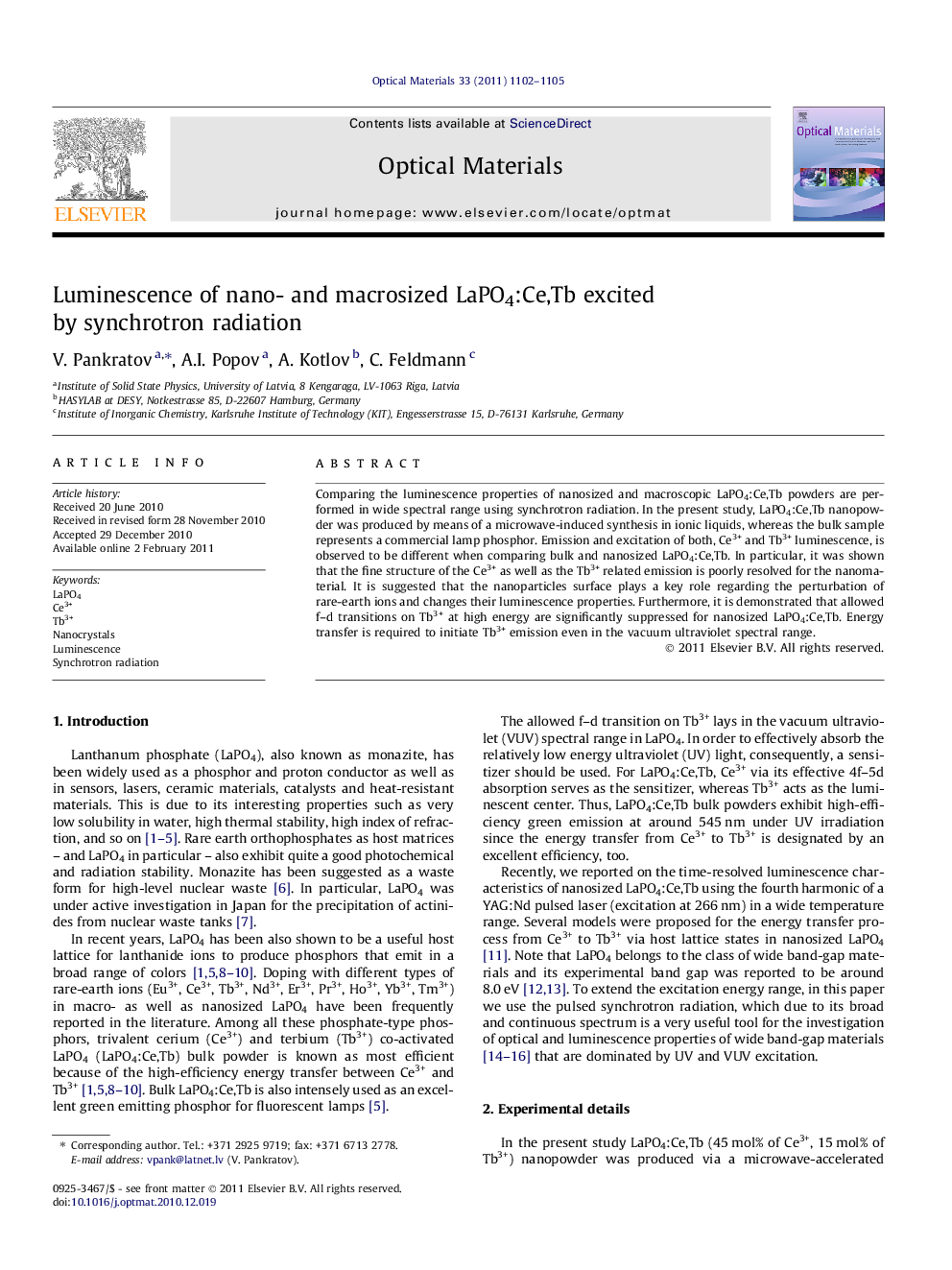| Article ID | Journal | Published Year | Pages | File Type |
|---|---|---|---|---|
| 1496260 | Optical Materials | 2011 | 4 Pages |
Comparing the luminescence properties of nanosized and macroscopic LaPO4:Ce,Tb powders are performed in wide spectral range using synchrotron radiation. In the present study, LaPO4:Ce,Tb nanopowder was produced by means of a microwave-induced synthesis in ionic liquids, whereas the bulk sample represents a commercial lamp phosphor. Emission and excitation of both, Ce3+ and Tb3+ luminescence, is observed to be different when comparing bulk and nanosized LaPO4:Ce,Tb. In particular, it was shown that the fine structure of the Ce3+ as well as the Tb3+ related emission is poorly resolved for the nanomaterial. It is suggested that the nanoparticles surface plays a key role regarding the perturbation of rare-earth ions and changes their luminescence properties. Furthermore, it is demonstrated that allowed f–d transitions on Tb3+ at high energy are significantly suppressed for nanosized LaPO4:Ce,Tb. Energy transfer is required to initiate Tb3+ emission even in the vacuum ultraviolet spectral range.
Research highlights► Luminescence properties of LaPO4:Ce,Tb are studied under synchrotron radiation. ► The nanoparticles surface perturbs dopants changing their luminescence properties. ► Energy transfer from Ce3+ is required to initiate allowed f–d transitions on Tb3+
